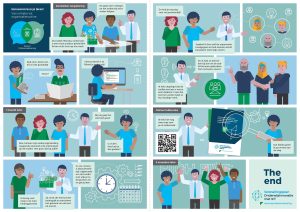
Implementing educational innovations in higher education: from initiation to organizational routine
Educational innovation using ICT has been a priority in higher education for years, due to its impact on the quality

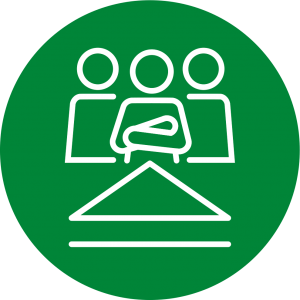
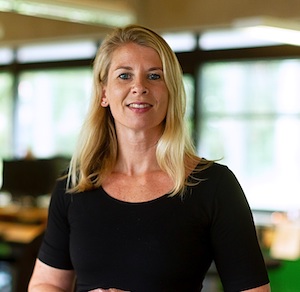 Universities and universities of applied sciences found their way in organising distance education at an impressively fast pace. But how do you maintain the quality of your education in the transition to online? “To achieve that goal, teachers themselves were taught in a virtual classroom,” says Carolien Kamphuis, an educationalist with expertise in the field of education and IT. She works at the Radboud Universityin Nijmegen.
Universities and universities of applied sciences found their way in organising distance education at an impressively fast pace. But how do you maintain the quality of your education in the transition to online? “To achieve that goal, teachers themselves were taught in a virtual classroom,” says Carolien Kamphuis, an educationalist with expertise in the field of education and IT. She works at the Radboud Universityin Nijmegen.
See it as the opportunity of a crisis. Just before the COVID-19 pandemic, Radboud University set up the Radboud Teaching and Learning Center (TLC), which includes educationalists and functional administrators of education systems. After the institutions closed, it turned out to be a crisis centre and “first aid” for teachers. In addition, “TIPpers” were used, says Carolien. “All faculties have a Teaching Information Point. They are the first supporters of the teachers. Together with the TLC they form a network in which all knowledge about facilitating teachers is exchanged.”
“In the first two weeks, we were mainly concerned with the question: How do you ensure that teachers can teach online as quickly as possible? How do you familiarise them with the tools? And how do they use those tools properly?” Carolien reflects. “Because after 4 hours of back to back teaching online, the only thing you have are exhausted teachers and severely demotivated students.”
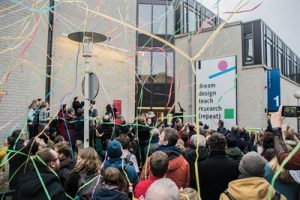
The TLC launched a special website for distance education. With information about various online working methods, student guidance, courses, and information about feedback and testing. In addition, the option for online proctoring was set up for summative tests. This was followed by an in-depth study, says Carolien. “We started to focus more on redesigning education so it would be suitable for online use. Before that, we organised several sessions to help teachers on their way. The university had already implemented Brightspace as a new electronic learning environment. We were now able to fall back on that. Within Brightspace we had the possibility of a virtual classroom.”
Lecturers were able turn to this learning environment for professionalisation activities. There they received online advice on how to design online education. “In such a virtual classroom we showed, for example, what you can do to involve students more during online education.” According to her, this was a disadvantage of the digital classroom: the teacher is visible on the screen, but the students are only listed as participants. “So as a teacher you also had less visual feedback. You no longer see from body language whether your students have understood what you are explaining. By the way, this has been adjusted in the new Microsoft Teams that we’ll hopefully start using soon: you can see students or students sit in the lecture hall.”
Not all teachers had the same digital skills. Support staff were trained at lightning speed to assist this group. “For example, if a teacher wanted to set up a poll, the supporter could do that for them. An investment, because someone had to be present throughout the lesson. But it did give teachers an important boost.”
In the second phase, the emphasis shifted to redesigning education. “People started to think about which online teaching methods are suitable for the learning objectives.”
Faculties and universities had frequent contact with each other during this period. They exchanged e-learning materials from different subjects among themselves. Publishers in the medical sector made their materials available for free. “People got together to find out what was possible. Reinventing the wheel took time we didn’t have.” Although the workload during this period was dramatically high, this time has yielded so much, says Carolien with satisfaction. “So many great digital learning materials have been developed during this period. We have made so many steps forward in the field of digital learning and innovation.”
And now a complete switch to online? “No,” she says. “There must be a good mix of digital learning and face-to-face learning. I hope people will continue to embrace innovation in education. It’ll be a nice challenge to maintain the current passion of teachers with regard to educational innovation with ICT.”
Incentive budgets in the form of test beds can contribute to this, so the focus on innovation remains. The TLCs can also play a nice role for teachers as a knowledge centre and community to exchange and inspire ideas, she says. “I’m extremely proud of the fact that the collaboration between the various faculties and the TLC turned out so well. For example, we are now also working on a project to link working methods to tools. It happened a few times that we worked from the possibilities of a tool to education. But really, you first need to know what your learning objectives are. And then you look at suitable teaching methods. Choosing the tools that can support this working method is the last step. Tools can indeed enrich education. But then you have to know what you want to achieve.”
Interview: Hester Otter
This is part 1 in a series of a total of 6 interviews with participants in the Professional development zone. In the interviews, they share practical experience and inspiration for supporting teachers in educational innovation with ICT.
Share this page

Educational innovation using ICT has been a priority in higher education for years, due to its impact on the quality
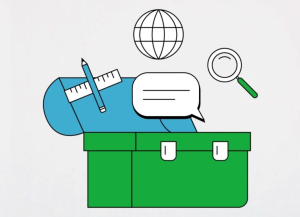
Blended learning. A concept that is high on the agenda in education land. Are you working on blended learning within

Making optimal use of the possibilities of IT in higher education requires new knowledge and skills from lecturers. As a
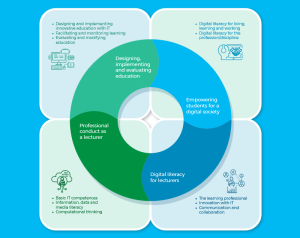
Do you want to know which digital competences of lecturers are relevant for educational innovation with IT? Then get to